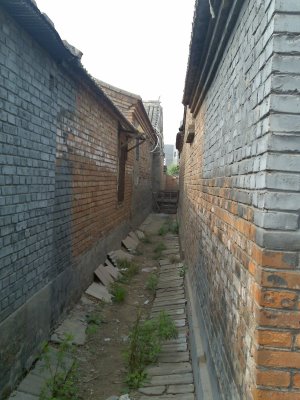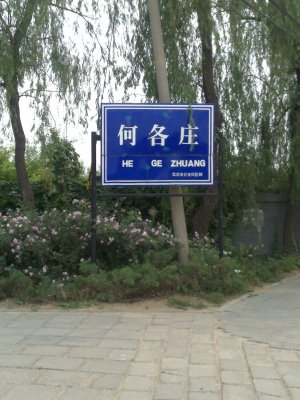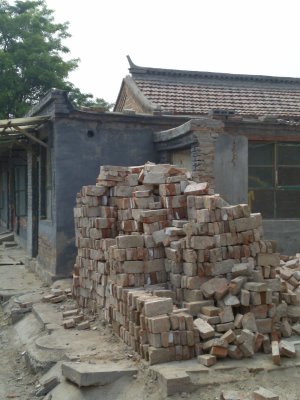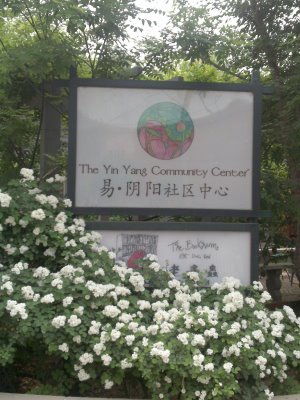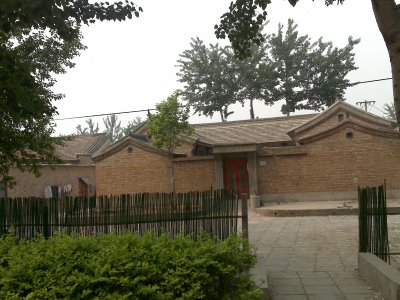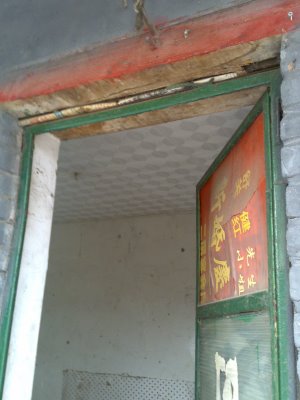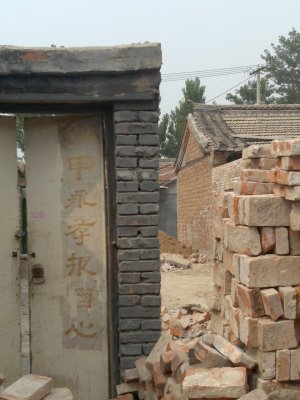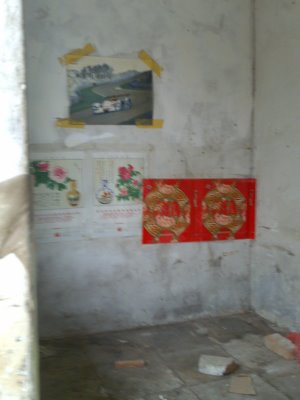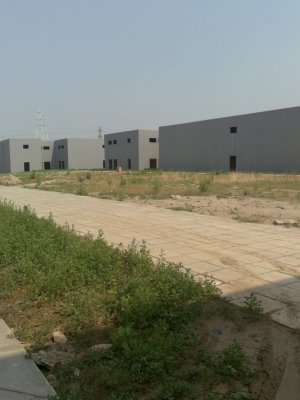
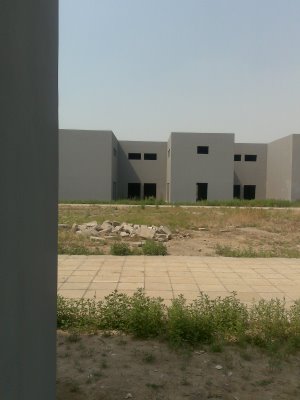
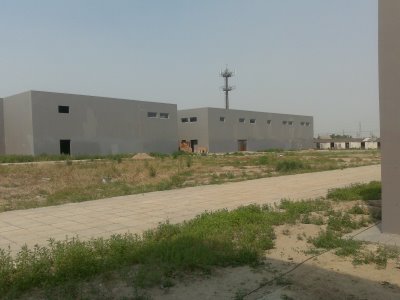
Next to the red brick gallery in which I danced last week is a compound of unfinished studio spaces. On Stéphane’s last day in Beijing I brought him there to see if we could use the space. There were a couple of guys hanging around but when I approached them to ask them what they knew about the place, they said they didn’t know. They cleared off, leaving us the expanse of courtyard to play with.
The buildings are not beautiful but it still astonishes me that the resources committed to their construction should have no outcome except to provide empty space for people to use as toilets; or for me to use as a backdrop for my research.
Unlike the solo material which I prepare in advance, adapting what I’ve brought to the conditions which I find there, with Stéphane the dance is improvised. It relies on the structure of a familiarity with one another built up over two years of working together. The outcome is takes longer to unfold than my constructed material. It explores rather than move forward to a predetermined outcome. Of course, in the constructed material, I think that though the destination is predetermined, what is learned and who I will be when I get to the end is unknown.
Dancing with someone else in these spaces is less familiar to me and though that’s good, I haven’t yet comprehended what it means for the work.

